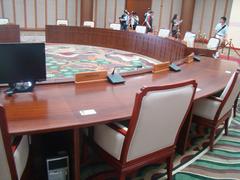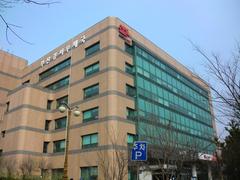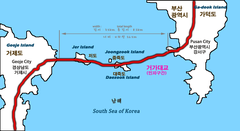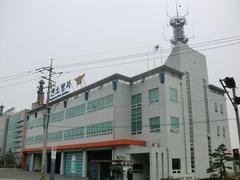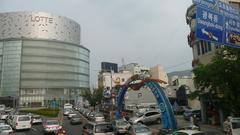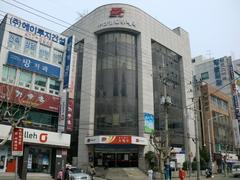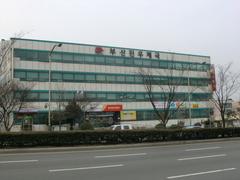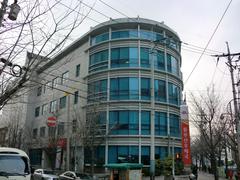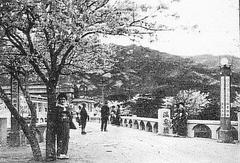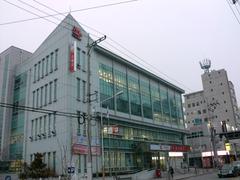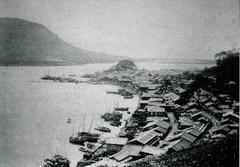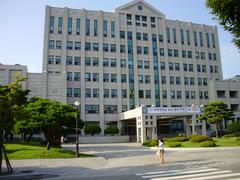Seodaesin Station: Visiting Hours, Tickets, and Travel Guide to Busan Historical Sites
Date: 04/07/2025
Introduction
Seodaesin Station is a key gateway in Busan’s extensive metro network, located in the historic Seo District. Since its opening in 1990 as part of Busan Metro Line 1’s western expansion, the station has played a vital role in connecting daily commuters and tourists with Busan’s oldest districts. Its strategic location links travelers to a blend of historical heritage, vibrant urban life, and cultural landmarks. This guide covers everything you need to know about visiting Seodaesin Station: operating hours, ticketing options, accessibility, nearby historical attractions, and practical tips for an enriching experience in Busan (UrbanRail.Net; Open Korea).
Contents
- Introduction
- Historical Background of Seodaesin Station
- Seo District: Historical Overview
- Visiting Hours, Ticketing, and Accessibility
- Architectural and Operational Features
- Nearby Historical and Cultural Sites
- Tips for Visitors
- Frequently Asked Questions (FAQ)
- Getting Around and Connections
- Conclusion
- Call to Action
Historical Background of Seodaesin Station
Origins and Construction
Seodaesin Station, situated in Seodaesin-dong (Seo District), opened on February 28, 1990, as part of the expansion of Busan Metro Line 1 (UrbanRail.Net). The Busan Metro system began development in 1979, with Line 1’s construction starting in 1981 and initial operations in 1985. The addition of Seodaesin Station supported Busan’s rapid urban development, improving accessibility to western neighborhoods and modernizing the city’s public transit.
Role in Urban Expansion
Busan’s significant population growth in the late 20th century led to the decentralization of urban activity. Seodaesin Station was instrumental in integrating historic neighborhoods into Busan’s modern fabric, facilitating the flow between the city center and peripheral areas (UrbanRail.Net).
Seo District: Historical Overview
Deep Roots in Busan’s Past
Seo District is among Busan’s oldest regions, dating back to the Goryeo Dynasty, and grew as a significant port and cultural hub during the Joseon Dynasty (Open Korea). Historic trade with Japan and China contributed to the district’s cosmopolitan character.
Modern Transformations
During Japanese colonial rule (1910–1945), Busan underwent extensive infrastructure development. The Korean War (1950–1953) saw the city serve as the provisional capital, accelerating urbanization and welcoming refugees. The metro’s expansion, including Seodaesin Station, further integrated these historically rich neighborhoods into modern Busan (Open Korea).
Visiting Hours, Ticketing, and Accessibility
Visiting Hours
Seodaesin Station operates daily from approximately 5:00 AM to 11:00 PM, with trains running every 4–10 minutes depending on the time of day (UrbanRail.Net; KoreaTripGuide).
Ticketing Options
- Single Journey Tickets: For one-way use, available at automated machines.
- Day Passes: Unlimited rides on Busan Metro Line 1 for a day, priced around ₩5,000.
- T-Money and Hanaro Cards: Rechargeable transportation cards usable on buses and metro lines across Busan (Travel80).
- Visit Busan Pass: Offers unlimited rides and access to select attractions for 24 or 48 hours (Visit Busan Pass).
Ticket machines support several languages, including Korean, English, Japanese, and Chinese.
Accessibility
Seodaesin Station is equipped with elevators, ramps, tactile paving for the visually impaired, and accessible restrooms. Multilingual signage and clear wayfinding make the station user-friendly for all travelers.
Architectural and Operational Features
Seodaesin Station features a straightforward, functional design characteristic of early Busan Metro stations, with tiled interiors and side platforms. Amenities include ticket machines, information desks, restrooms, luggage lockers, and bilingual signage (UrbanRail.Net; KoreaToDo).
Nearby Historical and Cultural Sites
Seodaesin Station is an excellent starting point for exploring several of Busan’s most notable attractions:
- Busan Modern History Museum: Chronicles the city’s transformation from a fishing village to a bustling metropolis (Secret Attractions).
- Yongdusan Park & Busan Tower: Offers panoramic city views and cultural monuments, open from 10:00 AM to 10:00 PM (Secret Attractions).
- Gamcheon Culture Village: Known for its vibrant art and history as a post-war settlement, accessible via bus or taxi (KoreaTripGuide).
- Jagalchi Fish Market & Gukje Market: Bustling traditional markets offering local delicacies and street food (Asian Wanderlust).
- Taejongdae Park: Famous for seaside cliffs and walking trails, accessible by bus (Asian Wanderlust).
- Dadaepo Beach: Known for its sunsets and summer fountain shows (Active Asia Tours).
Tips for Visitors
- Best Time to Visit: Weekdays and early mornings are less crowded; avoid rush hours (7–9 AM, 5–7 PM).
- Photography: Capture the vibrant street scenes outside the station and at Gamcheon Culture Village.
- Local Etiquette: Queue for trains, keep noise to a minimum, and respect priority seating.
- Travel Apps: Download KakaoMetro or Naver Map for navigation.
Frequently Asked Questions (FAQ)
Q: What are the operating hours of Seodaesin Station?
A: The station operates from approximately 5:00 AM to 11:00 PM.
Q: How much are tickets?
A: Single journey tickets are distance-based; day passes are around ₩5,000.
Q: Is the station wheelchair accessible?
A: Yes, with elevators, ramps, and accessible restrooms.
Q: Are there guided tours?
A: While no official tours start at Seodaesin, nearby attractions and museums offer guided experiences.
Q: What are the best nearby attractions?
A: Busan Modern History Museum, Yongdusan Park, Gamcheon Culture Village, and Jagalchi Market.
Getting Around and Connections
Seodaesin Station connects to multiple bus lines (Daetiro, Nakdong-daero, Mangyang-ro, Daeyeong-ro) and offers convenient access to village buses, making it easy to explore western Busan (Namu Wiki). The KORAIL Pass is also available for travelers looking to explore beyond Busan.
Conclusion
Seodaesin Station is more than a metro stop—it’s a symbol of Busan’s evolution, connecting its historic past with its vibrant present. Its accessible facilities, strategic location, and proximity to key historical and cultural sites make it an ideal starting point for exploring Busan. Whether your interest lies in history, art, gastronomy, or city life, Seodaesin Station provides the gateway to a memorable Busan experience.
Call to Action
For the latest updates on Busan’s attractions and transit options, download the Audiala app for real-time schedules and travel tips. Follow us on social media to discover more hidden gems and useful guides throughout Busan.
Visuals and Interactive Elements
- Include high-quality images of Seodaesin Station entrance, platform, Busan Modern History Museum, Yongdusan Park, and Gamcheon Culture Village. Use descriptive alt text for accessibility.
- Embed an interactive map pinpointing Seodaesin Station and nearby attractions.
- Link to related articles on other Busan landmarks, travel tips, and metro guides to encourage further exploration.
Additional Resources and Sources
- UrbanRail.Net
- Open Korea
- Secret Attractions
- KoreaTripGuide
- KoreaToDo
- Travel80
- Visit Busan Pass
- Active Asia Tours
- Asian Wanderlust
- Haps Korea
- Namu Wiki

